Buenos Aires, like any big city, has its ins and outs in its public transport system, but once you get to know them, it’s not difficult at all to get around town like a pro.
Guide to Navigating Buenos Aires Public Transportation
Are you planning a trip to Buenos Aires and wondering how to get around the city? Buenos Aires has a comprehensive public transportation system that allows you to explore the city easily and affordably. With options like buses, subways, trains, and taxis, you’ll have no trouble getting from one place to another.
In this guide, we’ll take a closer look at the different modes of transportation available in Buenos Aires and provide you with essential information to navigate the city like a local. From getting a SUBE card to riding the subte, taking the colectivo, using the train system, and even exploring the city on a bike, we’ve got you covered.
Key Takeaways:
- Buenos Aires offers a variety of public transportation options, including buses, subways, trains, taxis, and bicycles.
- To use public transportation in Buenos Aires, you’ll need a SUBE card, which can be purchased at kioskos or subte stations.
- The Buenos Aires subte system consists of six lines that cover the entire city, making it a quick and efficient way to travel.
- Colectivos, or buses, are an extensive network of routes that can take you anywhere in the city. Payment can be made using your SUBE card.
- The train system is a convenient option for day trips or traveling to the outskirts of Buenos Aires. You can use your SUBE card to pay for train rides.
- Taxis, known as remis, are readily available in Buenos Aires and can be hailed on the street or booked through taxi apps.
- Cycling is a popular way to get around Buenos Aires, with a network of cycle lanes and a bike-sharing program.
- Discover more with Vamos Academy, the Best Buenos Aires Spanish School
Getting a SUBE Card – Your Key to Buenos Aires Public Transportation
To use public transportation in Buenos Aires, you need to have a SUBE card. These reloadable blue transportation cards can be used on all public buses, subte, and trains. You can purchase a SUBE card from kioskos or corner stores, as well as from most subte stations. The cost of the card is 120 pesos, and you can reload it at kioskos or subte stations.
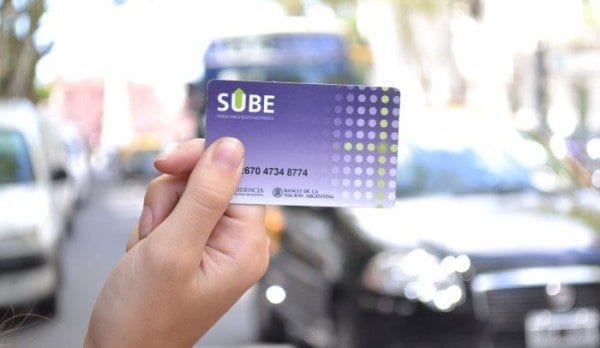

The SUBE card is essential for paying fares on buses, subte, and trains. It offers a convenient and cashless way to travel around the city, eliminating the need for exact change when boarding public transportation. With a SUBE card, you can also benefit from discounted fares available for certain groups, such as students and pensioners.
Getting a SUBE card is simple and straightforward. Just visit a kiosko, corner store, or a subte station and ask for a SUBE card. Make sure to have the necessary cash to purchase the card, which costs 120 pesos. Once you have your card, you can start using it immediately on buses, subte, and trains by simply tapping it on the card reader when boarding and exiting.
| Benefits of a SUBE Card | Where to Purchase | Cost and Reloading |
|---|---|---|
| Accepted on all buses, subte, and trains Convenient and cashless payment method Discounted fares for certain groups Easy transfers between different modes of transportation | Kioskos Corner stores Most subte stations | Cost: 120 pesos Reloading: Kioskos, subte stations |
Navigating the Buenos Aires Subte System
The Buenos Aires subte system, also known as the metro or subway, is a crucial part of the city’s urban transportation network. With six lines covering the entire city, it offers a quick and efficient way to travel around Buenos Aires. Each line is color-coded, making it easy to identify and navigate.
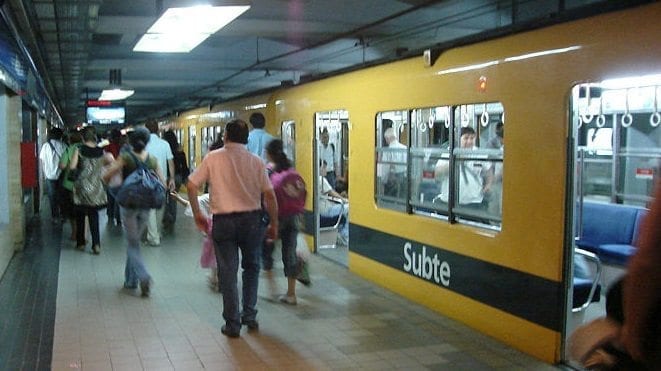

The six subte lines in Buenos Aires are:
- Line A (light blue)
- Line B (red)
- Line C (dark blue)
- Line D (green)
- Line E (purple)
- Line H (yellow)
The subte lines intersect at various points, with lines A, B, D, and E converging in the micro-centro, mainly around Plaza de Mayo. Lines H and C run north to south. The subte system has undergone significant improvements in recent years, expanding its coverage and accessibility across different neighborhoods in Buenos Aires.
Navigating the Buenos Aires Subte System
When using the subte, it’s essential to know your destination and the line you need to take. Some routes may require transferring to different lines, so it’s helpful to plan your journey in advance. The SUBE card, which can be purchased for 120 pesos, is used to pay for subte rides. With your SUBE card, you can easily tap in and out of the stations.
Navigating the Buenos Aires subte system can be challenging during peak hours, as some lines tend to get crowded. However, it remains a popular choice for commuting and exploring the city due to its speed and reliability. With the subte, you can efficiently reach major landmarks, neighborhoods, and attractions in Buenos Aires.
| Subte Line | Color | Interconnecting Lines |
|---|---|---|
| Line A | Light Blue | Line B, Line D |
| Line B | Red | Line A, Line D, Line E, Line H |
| Line C | Dark Blue | Line D, Line E |
| Line D | Green | Line A, Line B, Line C, Line E |
| Line E | Purple | Line B, Line C, Line D |
| Line H | Yellow | Line B |
With its extensive coverage and connectivity, the Buenos Aires subte system remains one of the most efficient ways to navigate the city. Whether you’re exploring popular tourist destinations or commuting to work, the subte offers a convenient and cost-effective mode of transportation throughout Buenos Aires.
Taking the Colectivo – Exploring Buenos Aires by Bus
Buenos Aires has an extensive bus network known as colectivos. With over 336 different routes covering the entire city, taking the bus can often be the fastest and most accurate way to reach your destination. The buses run frequently, ensuring minimal wait times for passengers.
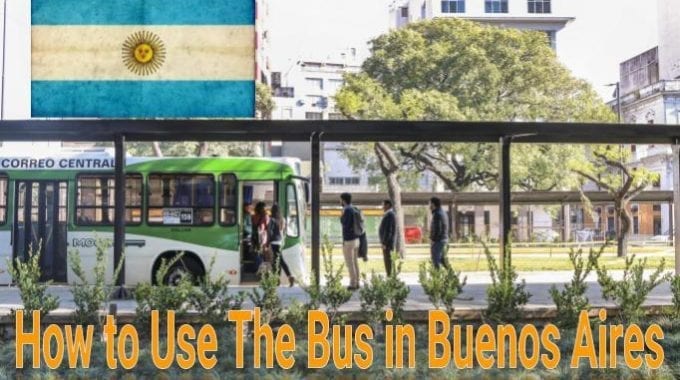

When using the colectivo system, it’s important to have a SUBE card. This reloadable blue transportation card can be used to pay for bus fares, as well as fares on the subte and trains. Before boarding the bus, it’s essential to inform the driver of your destination to ensure you are on the correct bus route.
Also Read: Touristic Yellow Bus
Exploring Buenos Aires by bus allows you to experience the city from a unique perspective. As you travel through different neighborhoods, you’ll witness the vibrant energy of the city while getting a glimpse into the daily lives of the locals. The bus routes cover a wide range of destinations, including popular tourist attractions, shopping districts, and residential areas.
Buenos Aires Bus Network Overview
| Bus Line | Route |
|---|---|
| Line 5 | Retiro – San Telmo – Caballito – Liniers |
| Line 9 | Plaza de Mayo – Recoleta – Belgrano – Saavedra |
| Line 20 | Constitución – Almagro – Villa Devoto |
| Line 59 | Palermo – Recoleta – Constitución |
| Line 152 | Palermo – Villa Lugano – Barracas |
The Buenos Aires bus network is well-connected, providing convenient transportation options for both residents and tourists. Whether you’re exploring the city’s diverse neighborhoods, visiting popular landmarks, or simply enjoying the local culture, the colectivo system offers a reliable and affordable way to navigate Buenos Aires.
Riding the Trains in Buenos Aires
The train system in Buenos Aires offers a convenient way to explore the city, whether you’re planning day trips or venturing out to the outskirts. With multiple train lines and stations, you can easily reach various destinations throughout the city.
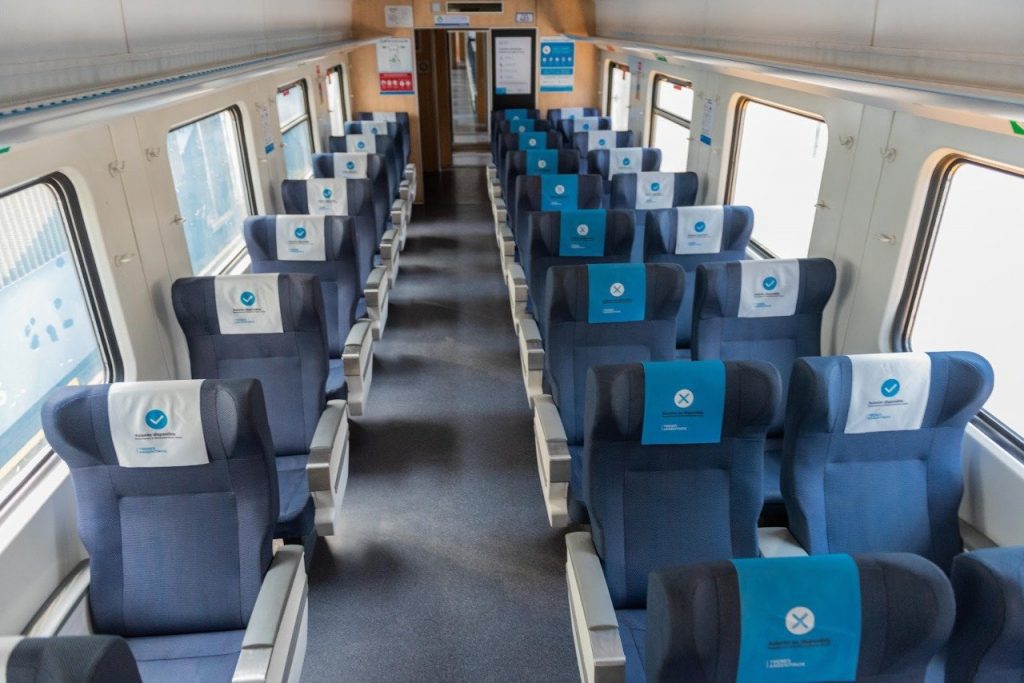

The main train stations in Buenos Aires are Retiro, Once, and Constitución. From these stations, you can access train lines such as Belgrano Sur, Belgrano Norte, Mitre, Roca, Sarmiento, and Urquiza. The trains run at regular intervals throughout the day, making it convenient to plan your journeys.
If you already have a SUBE card for public transportation, you can use it to pay for train rides. The SUBE card provides a seamless payment experience, eliminating the need for carrying and handling cash. Simply tap your card at the designated spots to validate your fare.
Train Schedule
When planning your train travel in Buenos Aires, it’s important to consider the train schedule. Trains generally operate from early morning until late evening, with varying frequencies depending on the line and time of day. It’s advisable to check the specific schedules for the train line you wish to take in order to plan your journey accordingly.
| Train Line | First Train | Last Train |
|---|---|---|
| Belgrano Sur | 5:30 AM | 11:30 PM |
| Belgrano Norte | 5:00 AM | 11:00 PM |
| Mitre | 6:00 AM | 12:00 AM |
| Roca | 5:00 AM | 11:00 PM |
| Sarmiento | 5:30 AM | 11:30 PM |
| Urquiza | 5:00 AM | 11:00 PM |
With a comprehensive train network and the convenience of the SUBE card, exploring Buenos Aires by train is a reliable and efficient option. Whether you’re heading to a neighboring town or discovering new parts of the city, the train system provides a comfortable and cost-effective means of transportation.
Getting Around with Remis and Taxis in Buenos Aires
Taxis, known as remis in Buenos Aires, are a convenient option for getting around the city. The standard yellow and black taxis can be hailed on the street, and there are also taxi apps like BA Taxi and Uber that offer convenient transportation options. Taxis are readily available and can take you directly to your destination.
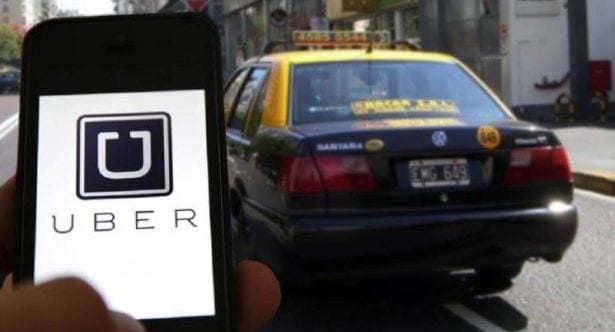

When taking a taxi in Buenos Aires, it’s recommended to use a cash payment option as drivers may not always have change. The fares are generally calculated based on a meter, but it’s always a good idea to confirm the approximate fare with the driver before starting the journey. Taxi rates in Buenos Aires are reasonable and offer a comfortable way to travel, especially if you prefer a door-to-door service.
Whether you’re heading to a specific destination or exploring different neighborhoods, taxis provide a flexible and reliable transportation service in Buenos Aires. With the remis service, you can enjoy the convenience of getting around the city at your own pace, without the need to navigate public transportation routes.
Remis vs. Colectivo: Which is Right for You?
If you’re considering different transportation options in Buenos Aires, it’s worth comparing remis (taxis) with colectivos (public buses). While taxis offer a more personalized and direct service, colectivos are a cost-effective way to navigate the city’s extensive bus network. Colectivos can often be faster than taxis during peak hours, as they have designated bus lanes that allow them to bypass traffic in some areas. However, if you prefer a more comfortable and convenient travel experience, taxis are the way to go.
| Remis (Taxis) | Colectivo (Buses) |
|---|---|
| Direct and door-to-door service | Cost-effective option |
| Comfortable and convenient | Extensive bus network |
| Available on-demand | Designated bus lanes |
| Payment in cash or through apps | Payment with SUBE card |
Exploring Buenos Aires on Two Wheels – Biking in Buenos Aires
Cycling is a popular and efficient way to get around Buenos Aires. The city has a network of over 287km of cycle lanes, making it easy to navigate on a bike. Whether you’re a local or a tourist, biking offers a unique way to explore the vibrant neighborhoods and iconic landmarks of Buenos Aires.
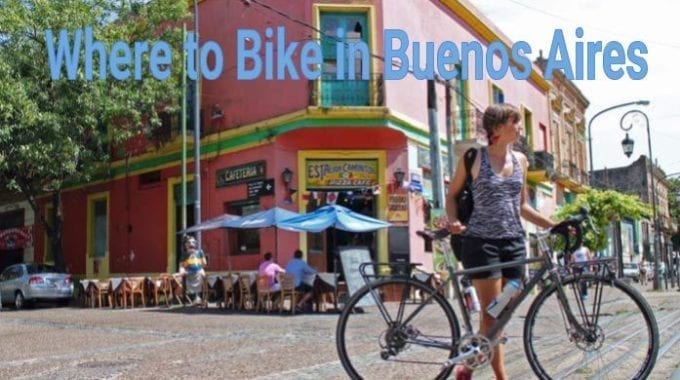

The BA Ecobici bike-sharing program is a great option for those who don’t own a bike. With the BA Ecobici app, you can easily access the bikes and enjoy free rentals for short journeys on weekdays. It’s a convenient and cost-effective way to discover the city at your own pace.
Exploring Buenos Aires on two wheels allows you to experience the city’s cultural sites, parks, and bustling streets up close. The gentle pace of cycling allows you to soak in the vibrant atmosphere and discover hidden gems along the way. Whether you’re visiting the historic Recoleta Cemetery, cruising through the colorful La Boca neighborhood, or breezing along the wide boulevards of Palermo, biking in Buenos Aires offers a unique and memorable experience.
| Biking in Buenos Aires | Benefits |
|---|---|
| Access to extensive bike lanes | Convenient and safe biking experience |
| BA Ecobici bike-sharing program | Free bike rentals on weekdays |
| Flexible exploration | Create your own itinerary and stop wherever you want |
| Affordable and eco-friendly | Reduce your carbon footprint and save money on transportation |
Walkability in Buenos Aires – Exploring on Foot
One of the best ways to get around Buenos Aires is on foot. The city’s grid system and relatively compact size make it a walkable destination. Whether you’re exploring the vibrant streets of Palermo or the historic neighborhoods of San Telmo, walking allows you to fully immerse yourself in the city’s culture and discover hidden gems along the way. However, it’s important to note that Buenos Aires sidewalks can be crowded and uneven, so it’s essential to watch your step.
Walking in Buenos Aires can often be faster than relying on public transportation, especially during peak traffic hours. It’s a great option for short distances or when you want to take your time and soak in the city’s atmosphere. Plus, walking gives you the flexibility to stop and explore intriguing shops, enjoy street art, or indulge in the city’s famous cuisine at a sidewalk café.
To make the most of your walking experience, consider planning your route in advance and using a map or GPS for guidance. You can also join a walking tour or hire a local guide who can provide fascinating insights into the city’s history and landmarks. Remember to stay hydrated, wear comfortable shoes, and keep your belongings secure to ensure a pleasant and safe walking experience in Buenos Aires.
Accessibility in Buenos Aires Public Transportation
Buenos Aires is committed to improving accessibility in its public transportation system. While there are still some challenges, efforts have been made to make travel more inclusive for everyone. Here are some key aspects of accessibility in Buenos Aires:
Wheelchair Access on Buses
Buses in Buenos Aires are equipped with ramps to accommodate passengers in wheelchairs. However, it’s important to note that not all bus stops have wheelchair-accessible ramps. Therefore, it’s advisable to plan your journey ahead of time and ensure that you choose stops that are accessible.
Elevators in Subte Stations
Some subte stations in Buenos Aires have elevators to facilitate easy access for passengers with mobility challenges. These elevators provide a convenient way to navigate the different levels of the stations. However, it’s worth mentioning that not all stations have elevators, so it’s important to check the accessibility of the station before planning your route.
Accessible Sidewalks
Buenos Aires is working towards making its sidewalks more accessible by installing curb ramps. These ramps provide easier access for individuals with mobility aids or strollers. However, it’s important to note that not all sidewalks in the city have been upgraded yet, so some areas may still pose challenges for pedestrians with mobility limitations.
Lonely Planet’s Accessible Travel Resources
If you are planning a trip to Buenos Aires and require further information on accessible travel options, Lonely Planet provides comprehensive resources on accessible travel. Their guides offer valuable insights and tips for navigating the city’s public transportation system with ease. Be sure to check out their website for more information.
| Accessibility Features | Availability |
|---|---|
| Wheelchair ramps on buses | Partial, not available at all bus stops |
| Elevators in subte stations | Partial, not available at all stations |
| Accessible sidewalks | Work in progress, not all sidewalks are accessible |
In conclusion, while there are improvements being made to enhance accessibility in Buenos Aires public transportation, it’s important to plan your journey ahead of time and be aware of the available accessibility features at each mode of transport. By doing so, you can create a more inclusive travel experience and enjoy all that Buenos Aires has to offer.
Step-by-Step Guide: Getting a SUBE Card
If you’re planning to use public transportation in Buenos Aires, it’s essential to have a SUBE card. Getting a SUBE card is a straightforward process that allows you to pay for fares on buses, subte, and trains conveniently. Here’s a step-by-step guide to help you get started:
- Locate a kiosko or corner store: SUBE cards can be purchased at kioskos or corner stores throughout the city. These establishments are easy to find and are usually open during regular business hours.
- Purchase your SUBE card: The cost of a SUBE card is 120 pesos. Simply approach the counter and request a SUBE card. The attendant will provide you with a card and activate it for immediate use.
- Reload your SUBE card: After purchasing a SUBE card, you’ll need to add funds to it. You can reload your card at kioskos or at most subte stations. Simply inform the attendant of the desired amount, and they will assist you with the transaction.
Once you have your SUBE card, you’re ready to start using public transportation in Buenos Aires. Remember to keep your card safe and easily accessible when traveling, as you’ll need to tap it on the card reader at the entrance and exit of buses, subte stations, and train platforms.
Benefits of Using a SUBE Card
Using a SUBE card offers several benefits when navigating Buenos Aires’ public transportation system:
- Convenience: With a SUBE card, you don’t need to worry about carrying exact change for fares. Simply load funds onto your card, and the fare is deducted automatically when you tap it on the card reader.
- Cost savings: Using a SUBE card can help you save money on transportation expenses. The cost of a single ride is lower when paying with a SUBE card compared to cash fares.
- Multi-modal access: A SUBE card can be used on buses, subte, and trains, providing seamless travel across different modes of public transportation.
- Easy reloading: SUBE cards can be reloaded at various locations throughout the city, including kioskos and subte stations. This makes it convenient to add funds to your card whenever necessary.
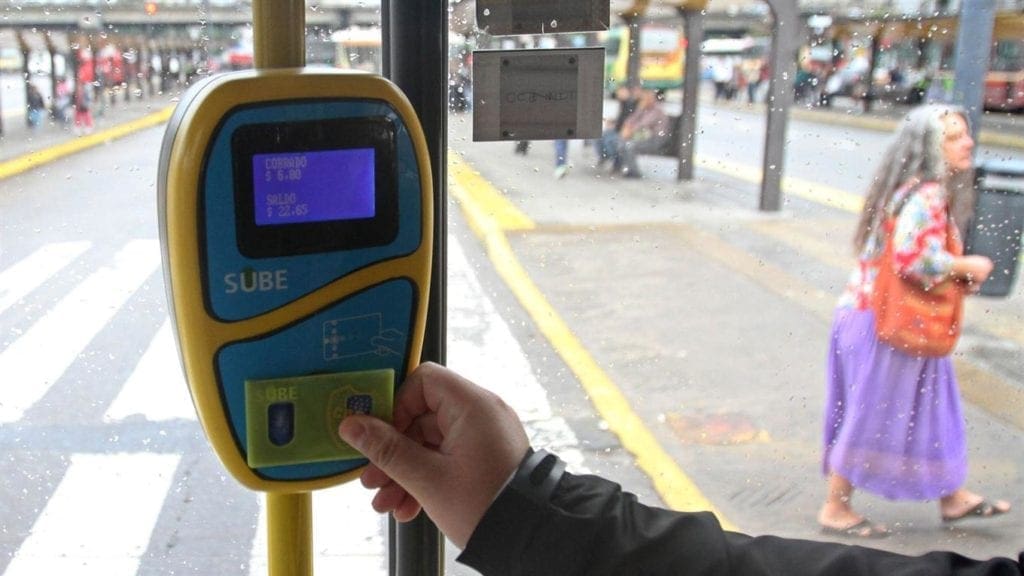

By following this step-by-step guide and acquiring a SUBE card, you’ll have a hassle-free experience using public transportation in Buenos Aires. Enjoy exploring the city’s vibrant neighborhoods and landmarks with ease and affordability!
Navigating the Buenos Aires Subte System
The Buenos Aires subte system is a vital component of the city’s public transportation network. It offers residents and visitors a quick and efficient way to navigate through various neighborhoods and reach major landmarks. With six color-coded lines, the subte covers a significant portion of the city, making it an indispensable mode of transportation.
The subte lines are strategically designed to connect different parts of Buenos Aires. Lines A, B, D, and E converge in the micro-centro, which is the city’s central business district. This makes it convenient for travelers to reach popular destinations like Plaza de Mayo and the Obelisco. Lines H and C run north to south, providing access to neighborhoods outside of the city center.
While the subte is generally reliable, some routes may require multiple line changes, which can be inconvenient for certain journeys. However, recent improvements have been made to expand the coverage of certain lines, enhancing connectivity across the city. The subte is a preferred mode of transport for those looking to avoid heavy traffic and reach their destination quickly.
Subte Line Overview
| Line | Color | Major Destinations |
|---|---|---|
| A | Light Blue | Plaza de Mayo, Congress, San Telmo |
| B | Red | Obelisco, Palermo, Recoleta |
| C | Dark Blue | Retiro, San Telmo, Constitución |
| D | Green | Palermo, Recoleta, Belgrano |
| E | Purple | Retiro, San Telmo, Constitución |
| H | Yellow | Palermo, Recoleta, Balvanera |
To use the subte, you need a SUBE card, which can be purchased at kioskos, corner stores, and most subte stations. The SUBE card is a reloadable transportation card that can also be used on buses and trains. With your SUBE card, you can easily pay for your subte rides and enjoy the convenience of seamless transfers between different subte lines.
The Buenos Aires subte system is an integral part of the city’s public transportation network. With its extensive coverage and efficient service, it offers a convenient and reliable way to explore Buenos Aires and reach your desired destinations.
Taking Colectivos – Exploring Buenos Aires by Bus
Colectivos, or buses, are a popular mode of transportation in Buenos Aires. The city has an extensive bus network with hundreds of routes that cover the entire city. Buses run frequently, making them a convenient and affordable option for getting around. To board a colectivo, simply stand at a designated bus stop and wait for the bus to arrive. It’s important to inform the driver of your destination before boarding.
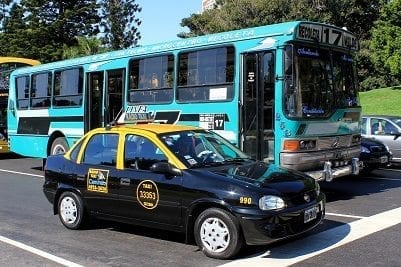

When using the bus, it’s recommended to have a SUBE card. The SUBE card is a reloadable transportation card that can be used on buses, subte, and trains. With a SUBE card, you can easily pay for your bus fare by tapping the card on the card reader when boarding the bus. If you don’t have a SUBE card, you can also pay with exact change, but be prepared for the possibility of not receiving change back.
When taking a colectivo, it’s helpful to know the route number or name of the bus you need to take. This information can be found on the bus stop signs or on transportation apps like Moovit or BA Cómo Llego. Inside the bus, there will be a display that shows the upcoming stops, so you know when to get off. Buses can get crowded during peak hours, so be prepared for that and keep an eye on your belongings.
| Bus Line | Route | Major Stops |
|---|---|---|
| Line 29 | Plaza Italia – Estación Chacarita | Palermo, Recoleta, Almagro, Chacarita |
| Line 152 | Parque Chacabuco – Ciudad Universitaria | Boedo, San Telmo, Retiro, Palermo |
| Line 60 | Constitución – Tigre | San Telmo, Retiro, Palermo, Vicente López |
Exploring Buenos Aires by colectivo is not only a convenient way to get around but also an opportunity to see the city’s vibrant neighborhoods and iconic landmarks. So hop on a bus, grab a window seat, and enjoy the ride!
Using the Train System in Buenos Aires
The train system in Buenos Aires is a reliable and convenient mode of transportation for both locals and tourists. With multiple train lines and stations throughout the city, it offers an efficient way to travel to various destinations and explore the outskirts of Buenos Aires.
The train lines in Buenos Aires include Belgrano Sur, Belgrano Norte, Mitre, Roca, Sarmiento, and Urquiza. Each line has its own route and connects to different areas of the city. With regular intervals between train departures, you can easily plan your journey and avoid long waiting times.
To access the trains, you will need a SUBE card, which can be obtained at kioskos or corner stores. The SUBE card allows you to pay for train rides by simply swiping it at the entrance gate. The fares vary depending on the distance traveled, but they are generally affordable and cost-effective.
| Train Line | Destinations |
|---|---|
| Belgrano Sur | Tapiales, Aldo Bonzi, González Catán, and more |
| Belgrano Norte | Vicente López, Olivos, Boulogne, and more |
| Mitre | Tigre, Carapachay, Florida, and more |
| Roca | La Plata, Quilmes, Berazategui, and more |
| Sarmiento | Moreno, Morón, Castelar, and more |
| Urquiza | San Miguel, El Palomar, Martín Coronado, and more |
Whether you’re planning a day trip to explore the surrounding areas or simply need a convenient way to commute within the city, the train system in Buenos Aires offers a reliable and efficient option. With the SUBE card in hand, you’ll have easy access to the trains and enjoy a smooth journey to your destination.
Navigating Buenos Aires with Taxis (Remis)
Taxis, known as remis in Buenos Aires, are a convenient and reliable mode of transportation to navigate the city. Whether you prefer hailing a taxi on the street or using taxi apps like BA Taxi or Uber, you can easily reach your destination with ease and comfort.
One of the advantages of taking a taxi is the flexibility it offers. Unlike public transportation, taxis can take you directly to your desired location without any intermediate stops. This can be especially useful when you’re in a hurry or if you have heavy luggage.
When taking a taxi in Buenos Aires, it is recommended to use cash for payment as not all drivers may have card machines. It’s also important to note that taxi fares in Buenos Aires are calculated based on a metered system that takes into account factors such as distance traveled and time spent in traffic.
Benefits of Taking Taxis in Buenos Aires:
- Convenience: Taxis can be hailed on the street or booked through taxi apps, providing a hassle-free and convenient way to travel.
- Efficiency: Taxis offer a direct route to your destination without any intermediate stops, making them a time-efficient option.
- Comfort: Taxis in Buenos Aires are usually well-maintained and equipped with air conditioning, ensuring a comfortable journey.
- Safety: Taxis in Buenos Aires are regulated, and drivers are required to have a valid license, providing a sense of security for passengers.
Overall, taxis are a popular choice for locals and tourists alike when it comes to getting around Buenos Aires. With their flexibility, convenience, and comfort, taxis offer a reliable transportation option for exploring the city.
| Taxi App | Availability | Payment Options | Additional Features |
|---|
Exploring Buenos Aires on Two Wheels – Cycling in the City
Buenos Aires offers a vibrant and bike-friendly environment, making it a fantastic city to explore on two wheels. With a network of over 287km of cycle lanes, cyclists can easily navigate their way through various neighborhoods and discover hidden gems. Whether you’re a seasoned cyclist or just looking to enjoy a leisurely ride, biking in Buenos Aires is a unique and exhilarating experience.
The BA Ecobici bike-sharing program is a great way to get started on your cycling adventure. With this program, you can enjoy free bike rentals on weekdays, allowing you to explore the city at your own pace. Simply download the BA Ecobici app to access the bikes, or visit one of the many rental stations conveniently located throughout Buenos Aires. The program provides a seamless and eco-friendly way to move around the city while enjoying the fresh air and scenic views.
While cycling through Buenos Aires, be sure to visit some of the city’s top attractions, such as the historic neighborhood of San Telmo, the bustling streets of Palermo, and the picturesque waterfront of Puerto Madero. Take advantage of the cycle lanes to effortlessly navigate through the traffic and soak in the vibrant atmosphere of the city. From charming cafés to stunning parks, there’s always something new to discover when exploring Buenos Aires on two wheels.
| Benefits of Cycling in Buenos Aires |
|---|
| • Eco-friendly transportation option |
| • Easily accessible bike-sharing program |
| • Enjoy the city’s unique charm and vibrant atmosphere |
| • An efficient way to navigate through traffic |
| • Discover hidden gems and picturesque neighborhoods |
So, grab a bike and start pedaling your way through Buenos Aires. Whether you’re a seasoned cyclist or a casual rider, exploring the city on two wheels is an unforgettable experience that allows you to truly immerse yourself in the local culture and vibrant energy of Buenos Aires.
FAQ
How do I get a SUBE card?
You can purchase a SUBE card from kioskos or corner stores, as well as from most subte stations. The cost of the card is 120 pesos.
Where can I reload my SUBE card?
You can reload your SUBE card at kioskos or subte stations.
How many lines does the Buenos Aires subte system have?
The Buenos Aires subte system has 6 lines: A, B, C, D, E, and H.
Can I use my SUBE card on the bus?
Yes, you can pay for the bus using your SUBE card.
How many bus routes are there in Buenos Aires?
There are more than 336 different bus routes covering the entire city.
Can I use my SUBE card on the train?
Yes, you can use your SUBE card to pay for train rides in Buenos Aires.
How can I hail a taxi in Buenos Aires?
Taxis, also known as remis, can be hailed on the street or booked through taxi apps like BA Taxi or Uber.
Can I pay for a taxi with my SUBE card?
No, it is recommended to use cash for taxi payments in Buenos Aires.
Is cycling a popular mode of transportation in Buenos Aires?
Yes, cycling is a popular and efficient way to get around Buenos Aires. The city has a network of cycle lanes covering over 287km.
Is Buenos Aires a walkable city?
Yes, Buenos Aires is a walkable city with a grid system that makes navigation easy.
Is public transportation in Buenos Aires accessible for individuals with disabilities?
Buenos Aires is working towards improving accessibility in public transportation. Buses have ramps for wheelchair access, and some Subte stations have elevators.
Bonus tips:
– Get a Guia T, which is THE bus map and you can get it at any newspaper stand. The guide has instructions showing you how to use it, but you can also check out our step by step, more in-depth ‘How to read the Guia T‘ guide here. There are also different websites that can help you figure out the bus lines easily, like this one run by the city government. However, since you may not get internet access while on the go, having a pocket Guia T with you will always come in handy.
– There are 2 sets of bus fare. One is when you pay with the Sube card, the other one is when you pay with coins (double the fare paid with a Sube card). Within each set, there are 3 fares and that depends on how far you travel within the city. (There are different fares if you go outside of the city). It is because of that, you’ll have to tell the driver either where you are going or how much you are going to pay in order for him to charge you correctly.
– Since it’s more expensive to pay with monedas (coins), you may want to consider getting a Sube card especially if your stay is at least a few weeks long. You can use it to take the subte (subway) too.
– Pretty much all of the colectivos run 24/7 and also quite frequently: around 5-10 mins. during weekdays but longer like 15-30mins. during the night, on weekends and holidays.
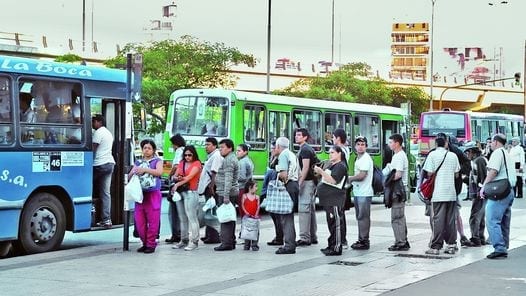

– Since it’s the cheapest means for locals to travel around town, even in the wee hours you’ll see buses full of people. You usually won’t be alone.
– The colectivo generally stops every 2 cuadras (blocks). Given each block is around 100 meters, the bus stops are quite close to each other, so you don’t need to worry too much if you miss a stop, you could always walk it.
– A bus stop could be for more than one bus. If so, people will just form one big line (facing the oncoming traffic i.e. watching the bus arrives) while waiting for the bus, and wave down the one they want to take.




